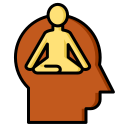Mindful Listening: Enhancing Focus and Calm
Today’s chosen theme is Mindful Listening: Enhancing Focus and Calm — a simple, human practice that steadies your mind, deepens concentration, and brings gentle ease to busy hours. Settle in, listen closely, and share your reflections so we can learn together.

The science of attention and sound
When you focus gently on ambient sounds without judging them, attention networks engage while stress loops lose fuel. Breath slows, the body signals safety, and your mind steadies. Short, consistent practice compounds gains in clarity, steadiness, and cognitive flexibility.
A small story: the coffee shop pause
Yesterday, a barista’s grinder roared, and I caught my shoulders rising. I paused, counted three breaths, then tracked the grinder’s rise and fade like a wave. Tension unclenched; the room felt wider, and my task became simpler.
Try this today
For one minute, close your eyes, notice three layers of sound—nearest, mid-distance, far—without labels like good or bad. Then name one intention for your next task. Tell us what you noticed, and whether your focus felt different afterward.

60-second doorway practice
Each time you pass a doorway, pause. Feel your feet, soften your jaw, and receive whatever sound is present for three breaths. Step through on the exhale with one clear verb—write, call, stretch—and let that word guide your next minute.

Morning sound check-in
Before messages, open a window or a voice memo. Listen for five distinct sounds, then whisper what each invites—patience, precision, play. This primes attention gently, without caffeine jolts. Share your five-sound list with us to inspire tomorrow’s listeners.

Evening decompression with rain or silence
After work, give yourself a three-minute sound shower. Choose rain, brown noise, or simple room silence. Let exhalations lengthen. Notice thoughts drift by like cars at dusk. If it helps, subscribe for weekly ambient tracks curated for calm focus.

Listening to People, Not Just Noise
In conversation, take three inaudible breaths while noticing the speaker’s tone, pace, and pauses. This subtle pause gives empathy a foothold and trims reactive statements. Try it today, then tell us if the dialogue felt steadier or more spacious.

Listening to People, Not Just Noise
Simple mirrors reduce heat: ‘What I’m hearing is…’, ‘It sounds like you value…’, ‘Did I get that right?’ Pair reflection with eye contact and relaxed shoulders. Invite others to do the same and watch meetings shorten and outcomes improve.
Birdsong mapping walk
On a short walk, imagine a clock around you. Note a chirp at two o’clock, a coo at seven, a distant bark at ten. Sketch the sound map afterward. Posting your map might nudge someone else outside today.
Wind, leaves, and the breath
Match exhalations to the sway of branches or the wash of distant traffic. The body often follows rhythm into relaxation. If your mind sprints ahead, return to one repeating sound, kindly, as many times as needed.
Troubleshooting: Restless Mind, Busy Street
When a horn blares, label ‘hearing, tightness, heat’ rather than ‘ugh, chaos.’ Track the sound’s texture—buzz, wobble, edge—until it passes. Curiosity dissolves friction. Report back with one moment this week when curiosity changed your mood.
Troubleshooting: Restless Mind, Busy Street
If quiet amplifies thoughts, try soft, steady noise and anchor attention on the lowest tone. Place a hand on your chest to feel breath vibration. Gradually reduce volume over days. Celebrate small wins by noting two calmer moments daily.


